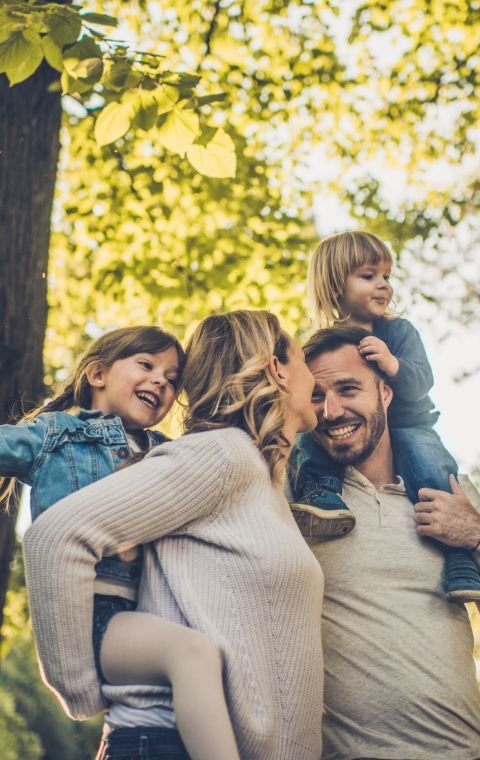What are head lice?
Head lice are small insects which live in human hair and feed on blood from the scalp. Their eggs are called nits.
- Head lice are about the size of a sesame seed and cling to hairs but stay close to the scalp which they feed off. Head lice lay eggs which hatch after 7 to 10 days. It takes about 7 to 10 days for a newly hatched louse to grow into an adult and start to lay eggs
- Nits are the empty yellow-white eggshells which are left when the lice hatch. Nits look like dandruff but stick strongly to hair. Unlike dandruff, you cannot easily brush out nits
Symptoms
Headlice can make your head feel:
- Itchy
- Like something is moving in your hair
Lice feed from the blood on your scalp, and it is the bites (and your skin's reaction to the bites) which make you itch.
Not all scalp itching is caused by head lice, and head lice don't always cause an itch. Many people with head lice do not have any symptoms. However, an itchy scalp occurs in some cases.
It can take about three months for an itch to develop after you are infested with lice. Therefore, you may not notice that you have head lice for a while and you may have passed them on to others by the time you are aware of them. Head lice and nits do not wash off with normal shampoo.
How do I know?
The only way to be sure someone has head lice is by finding live lice in the hair. You can do this by combing their hair with a special detection comb (a fine-toothed comb).
Head lice and nits are very common in young children and their families. They are not as a result of unclean hair or poor hygiene and are simply picked up by head-to-head contact. Head lice cannot jump or fly but walk from one head to another.
They soon die when away from the hair and they do not live for long in clothes or bedding. However, they can occasionally be passed by sharing items such as brushes, combs, hats or bedding. Most head lice infections are caught from family or close friends who are not aware that they have head lice.
Head lice are more common in children with long hair and, partly for this reason, tend to be more common in girls. The more children there are in any one family, the more common head lice are.
If you have head lice, when you comb through hair, one or more black nits come out on the comb.
Some people advise that you do this to children's hair regularly, about once a week. This may not always be necessary but can be helpful if people you are in contact with have head lice, or if it is a recurring problem.
Treatment
You can treat head lice without seeing a GP. It is important to treat head lice as soon as you spot them.
It is a good idea to check everyone in the house and begin treatment on anyone else who has head lice on the same day.
You do not need to keep your child off school if they have head lice.
Wet combing
Lice and nits can be removed by wet combing. You should try this method first.
You can buy a special detection comb your local CarePlus Pharmacy to remove head lice and nits.
There may be instructions on the pack, but usually you:
- Wash hair with ordinary shampoo
- Apply lots of conditioner (regular conditioner will do)
- Comb the whole head of hair, from the roots to the ends
- Slot the teeth of the detection comb into the hair at the roots so it is touching the scalp.
- Draw the detection comb through to the tips of the hair.
- Make sure that all parts of the hair are combed by working around the head.
- Check the comb for lice after each stroke. A magnifying glass may help.
- If you see any lice, clean the comb by wiping it on a tissue or rinse it before the next stroke.
- After the whole head has been combed, rinse out the conditioner.
- Repeat the combing procedure in the wet hair to check for any lice that might have been missed the first time.
Do wet combing on days 1, 5, 9 and 13 to catch any newly hatched head lice. Check again that everyone's hair is free of lice on day 17:
- The first combing session should remove all hatched head lice but does not remove eggs. Therefore, lice that hatch from eggs after the first session may still be present.
- Subsequent sessions clear newly hatched lice. Keep doing the combing sessions every four days until you have had three sessions where no lice are detected.
- Once you have had three sessions where you do not see any lice, it usually means that you are then free of lice
Medicated lotions and sprays
Ask your CarePlus pharmacist for advice if you have tried wet combing for 17 days, but your child still has live head lice. They may recommend using medicated lotions and sprays. These kill head lice in all types of hair.
Head lice should die within a day. Some lotions and sprays come with a comb to remove dead lice and eggs. Some treatments need to be repeated after a week to kill any newly hatched lice.
If lotions or sprays do not work, speak to a pharmacist about other treatments.
Prevention?
You cannot prevent head lice.
You can help stop them spreading by wet or dry combing regularly to catch them early. Do not use medicated lotions and sprays to prevent head lice. They can irritate the scalp.
It is almost impossible to prevent head lice entirely, although if you have a child with long hair, tying it back will reduce the risk of catching them. Detection combing once a week will allow you to pick up head lice early and treat them.
Treatment is needed only if you see one or more live lice. Empty eggshells (nits) do not always mean that you are infested with lice.
Good to know
- Use an anti-lice treatment only when you are sure that you have, or your child has, head lice. Do not use them to prevent head lice
- A common reason for head lice to come back in one person is because family and close friends are not checked for head lice. The treated person may then get head lice back again from untreated family or friends
- After treatment and when the lice have gone, it may take 2-3 weeks for the itch to go fully
- Nits may remain after lice have gone. They are empty eggshells and stick strongly to hair. They will eventually fall out. If you prefer, a fine-toothed 'nit comb' can remove them
- If your child has head lice, a common-sense approach is to tell the parents of their close friends to look out for lice in their children
- Children with head lice should carry on going to school. You need close head-to-head contact to pass lice on to others. Young children who play closely together may pass lice on
- All people who live in the same home and other close head-to-head contacts of the previous 4-6 weeks should be advised to look for lice. These people should only be treated if live head lice are found
- All people with head lice in the same house should be treated at the same time. This stops lice being passed around again

